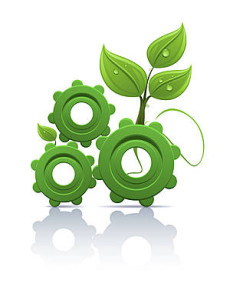 An inquiry conducted for the European Association of the Machine Tool Industries (CECIMO) among machine tool manufacturers shows a high awareness of the industry to embrace eco-design measures foreseen by the Ecodesign Directive (2009/125/EC). To ensure that the machine tool industry reaps the benefits of the ecodesign legislation, CECIMO has put forward a Self-Regulatory Initiative (SRI) offering a flexible and cost-effective way of reaching the environmental performance targets laid down by the Ecodesign Directive. A suervey was conducted in the first half of 2013 to prepare the implementation of the SRI proposed by CECIMO to the European Commission to replace yet-to-be-drafted ecodesign implementing measures on machine tools. Manufacturers selected for the interview covered a wide range of machine tool types and technologies used. There were 56% of SMEs and 44% of large companies (of more than 250 employees), from 11 countries.
An inquiry conducted for the European Association of the Machine Tool Industries (CECIMO) among machine tool manufacturers shows a high awareness of the industry to embrace eco-design measures foreseen by the Ecodesign Directive (2009/125/EC). To ensure that the machine tool industry reaps the benefits of the ecodesign legislation, CECIMO has put forward a Self-Regulatory Initiative (SRI) offering a flexible and cost-effective way of reaching the environmental performance targets laid down by the Ecodesign Directive. A suervey was conducted in the first half of 2013 to prepare the implementation of the SRI proposed by CECIMO to the European Commission to replace yet-to-be-drafted ecodesign implementing measures on machine tools. Manufacturers selected for the interview covered a wide range of machine tool types and technologies used. There were 56% of SMEs and 44% of large companies (of more than 250 employees), from 11 countries.
The inquiry unveils that companies are well aware of the ErP Directive. This fact is confirmed by 92% of respondents from both SMEs and large companies. Manufacturers’ awareness results in specific actions, be it a particular project (71%) or the assignment of a dedicated staff or unit to deal with ecodesign (59%). However, large companies are proportionally more likely to take action than SMEs. More than half of large companies and 30% of SMEs state that they already have to comply with their customers’ specific needs with regards to energy efficiency. The inquiry has revealed that only a very small portion of customers ask for labels the products comply with. Nonetheless, even if the market demand for energy-efficient products is currently limited, machine tool manufacturers know that, as in other sectors, it will soon become a topic of great importance and they must get ready for it.
The top four measures that come under the focus of machine tool builders are, in order of importance: 1) minimization of energy consumption in ‘stand-by mode’, 2) improvement of the main machining function, 3) improvement of the manufacturing strategy, 4) optimisation of secondary process functions for lubrication and cooling.
The investigation on the improvement potential reveals that most machine tools are already energy efficient. Fourty-six percent of the respondents indicate that the remaining potential for improvement, compared to the business-as-usual scenario, stands at less than 5%. Moreover, the transition to energy efficient products, as planned by the European legislation, will not happen overnight. When taking into account the full implementation of energy efficiency as a target, 77% manufacturers claim that their companies (not products) will be ready for it within two years. As soon as this happens, some products will immediately comply with ecodesign rules, as others will have to be re-designed. In general, the introduction of full eco-design capacity and its application to all products can take up to five years.
The self-regulation model drawn up by CECIMO will be implemented through self-declaration,
based on a scheme of acknowledged base cases identified and certified through a central SRI
administration. The work schedule is being prepared.



